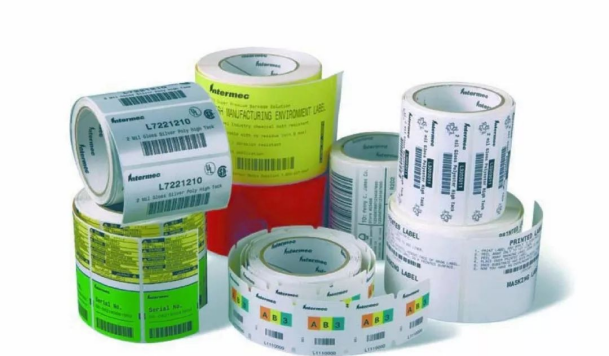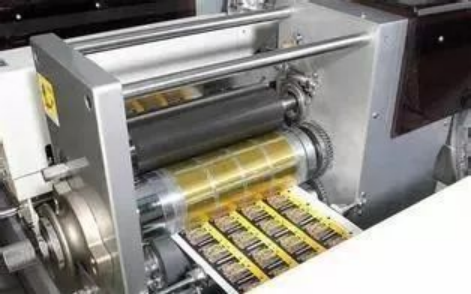- Enterprise dynamic
- Industry news
Enterprise dynamic
Frequent die-cutting problems? These four methods need to be mastered!
Frequent die-cutting problems? These four methods need to be mastered!
In the production process of self-adhesive labels, the quality of die-cutting will directly affect the production efficiency of the next process - labeling. In addition, during the high-speed labeling process, it is easy to cause label breakage, causing great trouble and losses to label printing enterprises. At the same time, it will also directly affect the aesthetics of terminal products and the user experience. There are many factors that affect the quality of die-cutting, and different label products have different requirements for die-cutting technology, methods, quality, efficiency, cost control, and so on.
Nowadays, there are roughly four types of die-cutting methods for self-adhesive labels: CNC cutting machines, flat die-cutting, circular die-cutting, and laser die-cutting.
01 CNC Cutting Machine
From a cost saving perspective, flat die-cutting and CNC cutting machines are the most cost-effective materials, especially CNC cutting machines. Their consumables are not only low, but also fast and convenient, without the need to prepare a physical knife plate or an electronic knife plate. Cutting commands can be executed through a computer or mobile app, and one or more special cutting heads start working at the same time, automatically searching for edges along the lines or cameras set in the knife plate for cutting work. The depth of cutting by the cutting head is determined by the thickness of the material and the pre set process requirements of the label. During the cutting process, slight adjustments can be made to the cutting head based on the actual cutting marks.

In addition, the working area of CNC cutting machine tools ranges from 300mm to 2000mm or more, and the larger the cutting width, the lower the positioning accuracy and repetition accuracy; The cutting speed range of a CNC cutting machine is 400mm/s to 2000mm/s. The more cutting heads there are, the faster the paper feeding speed is. Due to the lower price of CNC cutting machines, they are suitable for small label printing enterprises, printing companies, or sample making. However, the die-cutting efficiency and precision of CNC cutting machines are relatively low compared to the other three die-cutting methods, making them more suitable for manual labeling.
02 Flat pressing die cutting
Compared to CNC cutting machines, flat pressing die cutting is the earliest and most commonly used die cutting method for label printing enterprises. The cutting cost of flat pressing die cutting is low, and the cutting speed is fast (depending on the complexity of the graphics). The cutting plate for flat pressing die cutting generally adopts manual cutting or laser cutting methods, that is, CNC automatic bending and cutting are used to install the blades on medium density wooden boards, and finally, the arranged blade plate is installed on the die cutting machine tool holder.

The die-cutting efficiency of flat pressing die-cutting is much higher than that of CNC cutting machines, with a paper feeding speed of 20m/s to 100m/s. The prices of flat pressing die-cutting machines range from tens of thousands to hundreds of thousands of yuan, making them suitable for small orders, urgent orders, samples, printing with relatively narrow formats, non high-speed automatic labeling, and orders with less strict requirements for bottom paper cutting marks.
03 Circular pressing circular die-cutting
Circular die-cutting, also known as circular knife die-cutting, was first applied in the field of post-press processing and later widely used in industries such as daily chemical, electronics, and medicine. In recent years, with the rapid development of flexographic printing technology and higher production efficiency requirements from label printing enterprises, this die-cutting method has gradually become the main die-cutting method.
From the perspective of wiring methods, circular die-cutting can be divided into online die-cutting and offline die-cutting. Online die-cutting mainly occurs on flexographic printing machines with built-in circular blade die-cutting units, which can simultaneously complete the die-cutting requirements while completing label printing. In the customer base that I serve, online die-cutting accounts for about two-thirds of the total, and the speed of online die-cutting ranges from tens of meters per minute to 200m per minute. Online die-cutting can greatly improve production efficiency. Offline die-cutting, convenient for offline die-cutting requirements after offset printing, gravure printing, flexographic printing, etc.

At present, circular die-cutting is the most efficient and accurate die-cutting method (± 0.0025mm, meaning that the die-cutting knife needs to cut through the adhesive layer without damaging the silicon oil layer), which requires high-speed automatic labeling, ultra-thin backing paper (less than 40g of grazin, less than 0.030mm of PET) with no marks, special surface material blade angle control (40 °~60 °), and special blade treatment such as adding wear-resistant coatings (5-10 μ The dense chromium salt oxide and anti sticking coating of m have obvious advantages in circular die-cutting.
The cutting tools used in circular die-cutting are divided into two types: engraving knives and flexible blades, and the circular die-cutting method using flexible blades is increasingly replacing the circular die-cutting method of circular die-cutting knives and flat die-cutting.
The circular engraving cutter is a type of blade that is directly milled with a computer controlled three axis or multi axis (CNC) on a 45 # steel roller, and then subjected to other treatments such as tip hardness. The circular engraving knife is integrated with the blade roller body, and the flatness is controlled by the accuracy of CNC. The flatness is high, and the operation is simple. The knife roller can be pressurized by placing it in the chute. The disadvantage is that the price is expensive and replacement is not convenient. After the tool tip is worn, it needs to be sent back to the supplier for repair and grinding. The repair time and logistics cost are relatively high. Generally, printing companies will reserve multiple tool rollers to achieve the cycle of repair, transportation, and use, ensuring continuous production.

Circular pressure circular flexible blade is a type of blade that is generally made of high-quality and high hardness spring steel from Europe, undergoes a strictly controlled chemical etching process, and is carved by computer programmed equipment (CNC). The accuracy of the circular flexible blade can be controlled within ± 2.5 of the same design height difference μ M~± 5 μ Within the range of m, to ensure the uniformity of die-cutting, and the higher the precision and lifespan requirements of the blade, the higher the price. The price is composed of combination process and blade line length. Label printing enterprises need to customize different process requirements according to the actual product needs.
Compared to circular engraving knives, circular flexible blades have more precise dimensional accuracy between the blade and the blade, allowing for customization of various process requirements. Especially, the wear-resistant coating of this blade is only 5 μ M~10 μ In the case of m, the hardness can reach 73 ° to 75 °, which not only meets the service life requirements but also effectively protects the equipment and reduces the occurrence of damage from heavy pressure. In addition, the delivery time of circular flexible blades is relatively short, which can be completed within 4-5 days, with relatively low costs and more convenient replacement and backup. However, circular flexible blades require the purchase of high-precision magnetic rollers. When pasting the blades, it is necessary to pay attention to cleaning the surface of the magnetic rollers and the fitting surface of the blades to avoid dust and other debris adhering between the blades and the magnetic rollers, damaging the flatness of the blade and causing uneven cutting marks on the backing paper.
04 Laser die-cutting
Laser die-cutting is a die-cutting method that utilizes a beam of light emitted by a laser to focus evenly on the printed material according to the designed blade shape, with cutting marks up to micrometers.
Laser die-cutting does not require the production of solid knife plates, and can achieve rapid switching of different order graphics. Cutting graphic design can be completed on the computer, with various graphics and material parameter settings, automatically generating the depth of cutting marks required. At the same time, repetitive processing can be carried out. The computer can immediately start production by retrieving previously processed and programmed cutting programs, saving time for traditional die-cutting knife mold replacement and adjustment.

At present, the speed of laser die-cutting is slower than that of traditional die-cutting machines, and the price is higher. The cutting edge has burning phenomenon, and there is a problem of the minimum line width of the cutting line. It is more suitable for invitation cards, greeting cards, candy boxes, cake boxes, paper sculpture works of art, Paper Cuttings, gift packaging boxes, etc., and the application of non drying labels is less.
In short, considering cost control, if the order quantity is small, CNC cutting machines and low-speed flat die-cutting can be chosen; The product structure tends to be low-speed automatic labeling and manual labeling, and the order quantity is large. You can choose between high-speed flat pressing and low-speed circular pressing die-cutting; The order size is large, the product process and materials are variable, and the requirements for cutting marks are strict. Most of the order structures are high-speed automatic labeling. It is recommended to choose circular die-cutting with high cost-effectiveness; Laser die-cutting is still a cautious die-cutting method in the field of label printing, and you can choose a suitable die-cutting method based on the product structure. The above only represents personal views and hopes to be helpful to everyone.






